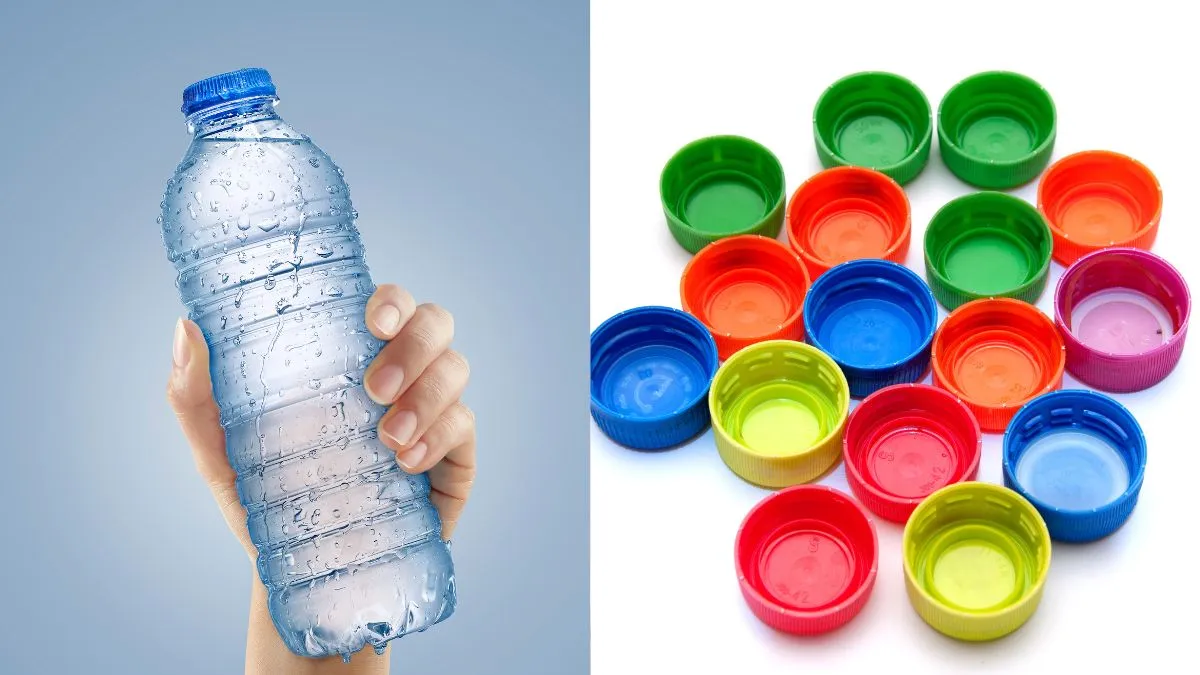- By Aditi Priya Singh
- Sun, 24 Aug 2025 04:44 PM (IST)
- Source:JND
Different Colours Of Water Bottles Mean: When you purchase a bottle of water or any other packaged beverage, you might observe that the cap's colour varies. It can be green, blue, white or even black at different times. It might appear to be a design decision at first, but there's frequently more to it than meets the eye. In our daily lives, colours play a significant role because they can convey specific information, safety or quality without the need for words.
Cap colours can act as a silent communication tool in the beverage and bottled water industries. They assist producers, employees, and even customers in identifying the type of water, whether it is mineral water, pure drinking water, or a speciality type with additional minerals or flavours. Additionally, these colours facilitate easier and more organised bottle distribution, packaging, and sorting. But not all brands adhere to the same guidelines, and the meaning of colours can vary depending on the location.
Therefore, even though the colour of the cap gives you a quick idea, you should still check the bottle's label, expiration date, and safety markings. Let's investigate this in more detail.
Why Bottle Caps Have Different Colours
Bottle caps come in many colours for more than just style. These colours help in quick identification, sorting, and sometimes even indicate the type or quality of the beverage inside.
Quick Identification: Helps workers and retailers identify different types of bottles instantly.
Production Convenience: Makes it easier to sort bottles during packaging and distribution.
Consumer Information: Some colours hint at the product type or safety standards.
ALSO READ: Did You Know You Can't Bring Water Bottles On A Plane And Why?
Common Colours Of Water Bottles and Their Meanings
 Difference between water bottle cap colours (Image: Canva)
Difference between water bottle cap colours (Image: Canva)
1. Blue or Light Blue: Often indicates plain drinking water or standard packaged water.
2. White or Transparent: Usually used for premium or purified water.
3. Green: Sometimes linked with mineral or spring water.
4. Black or Dark Colours: Frequently found on sparkling water or flavoured water bottles.
5. Red or Orange: May suggest added minerals, vitamins, or sports drinks.
Do Colours Indicate Safety?
Indirectly, yes, Colours can help track production batches, ensuring quality control. But not always, because not every brand follows the same code. So, the colour does not guarantee safety by itself.
Global vs Local Practices
Different countries use different standards for bottle cap colours, making them more than just a design choice. While some brands follow international colour codes for easy recognition, others create unique colour schemes to match their marketing goals and local preferences. This means a cap colour in one country may represent something entirely different in another, depending on the region’s practices.
What Should Consumers Know Before Buying a Packed Bottle?
Look for expiry date, ISI mark or safety labels rather than just the cap colour. Use colours as a quick clue, not a final proof of safety.
ALSO READ: Which Fruit Can Bounce Back? The Answer Will Surprise You
The colours on bottle caps are not random decorations but they are small but powerful indicators that make handling, sorting and recognising bottles easier. While they may not always follow a universal rule, being aware of these small details can make you more informed as a consumer. Next time you buy a bottled drink, you might notice the cap first and now you’ll know it has a story behind it.

